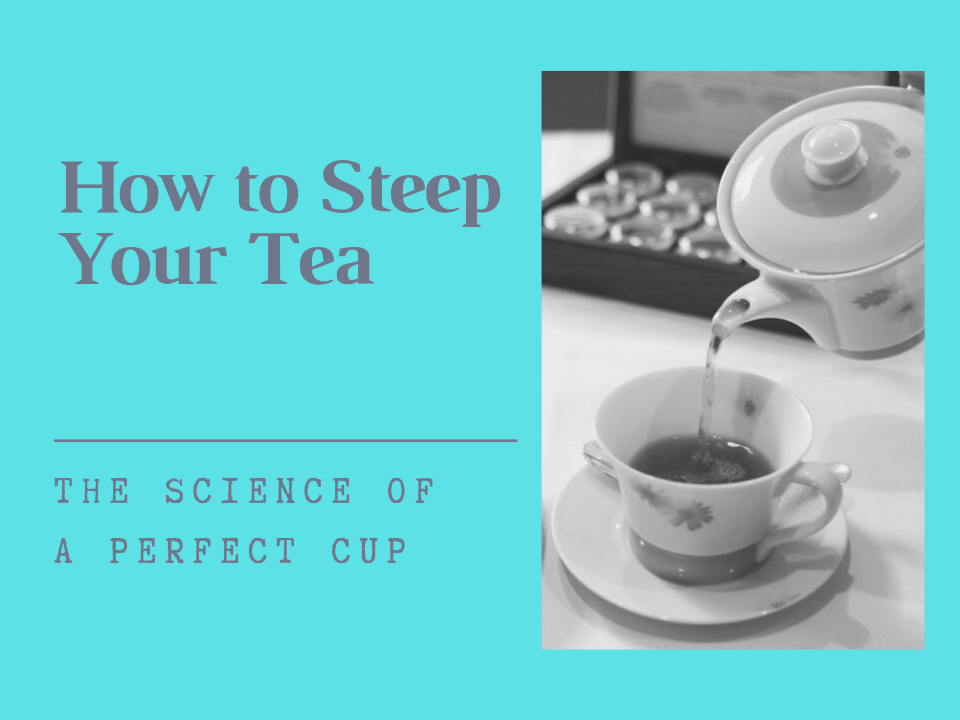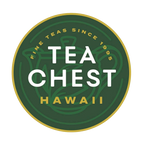
How to Steep Your Tea – The Science of A Perfect Cup
There is an algorithm to making delicious tea. YOU make all the difference because you control water, time and temperature. In this blog we will explain the algorithm and some important components in tea. With the techniques we'll cover, you can make mediocre tea taste good and good tea taste grand.
We will first assume two things. First, buy good tea. Good tea is not cheap and cheap tea is not good. And, good tea is still an affordable luxury. Many of the finest teas in the world cost less than fifty cents (yes CENTS) a cup. Second, use good water. It doesn't need to be filtered but should be neutral in pH, mineral content and smell. Chlorine will affect the taste of tea in case your township or city adds chlorine to its water supply.

The four primary tastes are salty, sweet, bitter and sour. By themselves boring, but thank goodness food and drink are more complex and fun. Flavors and aromas and colors synergistically create umami, pleasure and satisfaction… or displeasure and dissatisfaction. The main tastes in tea are sweet from amino acids and bitter from catechins and caffeine. There are other flavor components especially with flavored and scented teas but these are the main players.
TIME:
In the US, the average time a tea bag is steeped is 15 seconds. Other drinkers never take the bag out except to wash the cup. So how long should tea steep?
Tea bags brew quickly because the leaves are small and the aromatics, color and flavor components release quickly all at the same time in a mad dash to the finish line. Each ingredient in Hawaiian Natural Tea (HNT) organic tea bags is evaluated to see how it will taste even if grossly over brewed. HNT blends are designed for less bitterness and astringency.
Whole leaf tea on the other hand requires more brewing time. The aromatics, flavors and nutrients release at different rates in order of particle size (smaller molecules first). Aromatics are first which is why we smell tea before it’s finished brewing.
Leaf curl also dictates brew time. The tighter the leaf curl, the longer it takes to hit peak infusion. Examples of tightly curled teas include Jasmine Pearls, High Mountain Oolong and Honey Oolong.
PRO TIP: The darker the tea, the longer the steeping time. (See chart in the conclusion of this post)

Temperature:
Water boils at 215° fahrenheit (F) or 101° celsius (C). Coffee brews at 205° F (96° C). The industry benchmark for brewing black tea is 195° F (90° C). A great comparison to see the effects of temperature on tea is to brew the same tea using hot water versus cold water. Tea in hot water brews faster, darker and stronger.
Green and White Teas contain high amounts of catechins which taste bitter. If the water is too hot, the amino acids are scalded and contribute less sweetness to balance the bitter notes from the catechins and caffeine. Start Green and White teas at lower temperatures, 170° - 185° F, for the first infusion then increase the water temperature with each subsequent infusion ending at 205° F for the last infusion.
Oolongs and Black Teas start to brew nicely at 185° - 195° F. A little secret I've used all these years is to brew my black tea at 185° F for a sweeter, more balanced cup. You can stretch the brewing time longer for a darker, stronger cup, but at least the bitterness will be held in check.
Herbal and fruit teas do not contain caffeine so are generally not bitter. However, some herbals can be sour and tangy like hibiscus and rose hips. Lowering the water temperature will help reduce tartness.
PRO TIP: The lighter the color of tea, the cooler the water temperature.

Conclusion:
Play with time and temperature to see how variations affect your favorite teas.
| Tea |
Brew Time (minutes) |
Temperature (Farenheit) |
|---|---|---|
| White | 2 - 3 | 170° |
| Green | 2 - 3 | 170° - 185° |
| Oolong | 3 - 5 | 195° |
| Black | 3 - 4 | 185° - 195° |
| Herbals | 4 - 6 | 200° - 210° |


Leave a comment